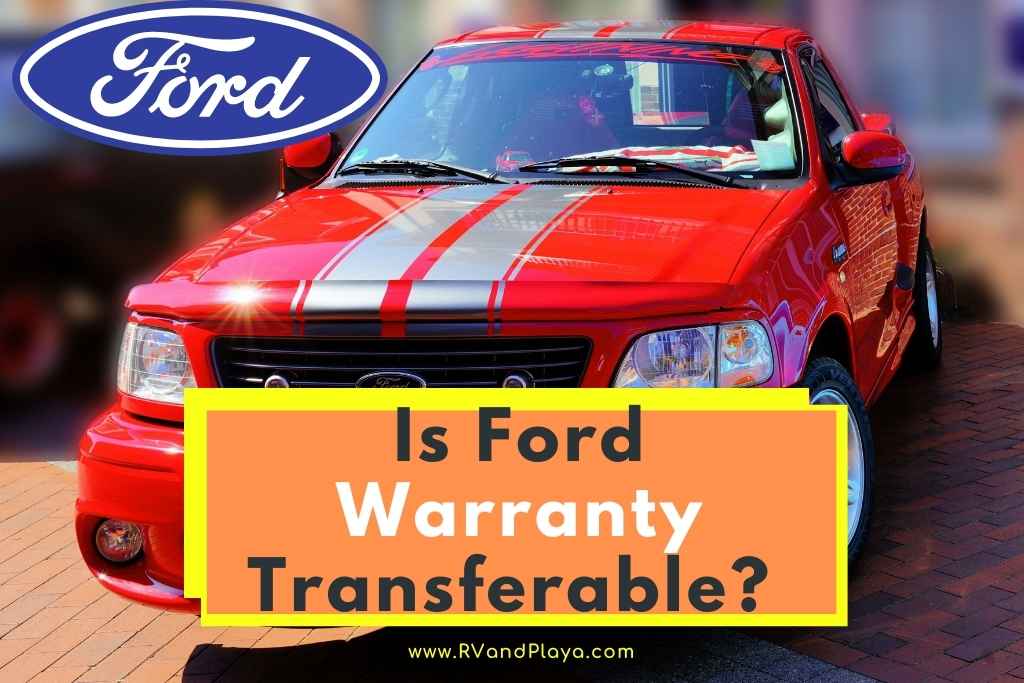Have you ever asked yourself or your friend if the Ford Factory warranty is transferable and how to transfer it? Well, you are at the perfect place to find the answer to such a question.
When you go out and purchase a Ford vehicle that is practically brand new, you kind of expect a few things to come with it.
After all, a used Ford vehicle with less than 10,000 miles is going to be nearly as expensive as it was brand new, despite the rapid depreciation value. One of those things is the remainder of the original warranty.
So, is the Ford warranty transferable? Yes, fortunately, Ford warranties are fully transferable and that is not just a matter of a kindly business but some warranty-related fine print is covered under federal law, 15 U.S. Code § 2302. You should expect the entirety of the warranty to transfer over seamlessly.
Unfortunately, Ford’s warranty isn’t the most robust thing on the planet and ends after 3 years or 36,000 miles.
So, unless the original purchaser sells the vehicle back well before the 36,000 miles are up, there won’t be a whole lot left on the warranty when it is purchased used.
Table of Contents
Overview of Ford’s Warranty
The warranty that comes with a new Ford vehicle is simply the standard in the vehicle manufacturing industry.
The industry standard protects against manufacturer defects for a specific number of miles and/or years.
- Emissions: The largest portion of the warranty, emissions cover 80,000 miles or 8 years.
- Safety Restraint Systems: Seatbelts and other restraint systems are covered for 60,000 miles of 5 years.
- Powertrain: The powertrain warranty runs for 5 years or 60,000 miles.
- Corrosion: Only extends to perforation and lasts 60,000 miles or 5 years.
- Ford Diesel Engines: 100,000 miles or 5 years.
- Bumper-to-Bumper: 36,000 miles or 3 years, whichever comes first.
So, even if you purchase a Ford vehicle that is past its bumper-to-bumper warranty period, it’s likely that you will still have some aspects of the warranty in effect, especially if you purchased a Ford with a diesel engine or the vehicle hasn’t passed 60,000 miles for certain systems.
You also get roadside assistance with the ford warranty that is only applicable for the 36,000-mile portion.
This is an aspect of most warranties that is easily overlooked, especially if you purchased the vehicle used and are aware of the warranty, but not some of the fine print.
Keep in mind, that the 80,000 miles or 8-year coverage for emissions only applies to Ford’s hybrid lineup.
The emissions that are covered in the warranty include the battery, the control module for the battery, the inverter system control module, and the electronic drive modular assembly.
Read also: What Does SE Mean on a Ford Car (SEL vs SE)
What Do Ford Warranties Not Include?
You might be surprised at the volume of issues that a Ford warranty doesn’t cover, however, many of the things that the warranty doesn’t cover makes a lot of sense because they are issues that are caused by the owner and not a manufacturer defect, although one of them is very vague and we will list that one first.
- Regular wear and tear from normal use
- Maintenance parts and labor
- Accidents and collision damage
- Accidental spills or chemical corrosion caused by customer applications
- Alteration or customization damage
- Vehicle misuse
- Damage from improper fuel or fluids
- Theft, vandalism, riots, or fires
- Driving through deep water
The first one is so vague because it is not properly defined and there is no telling what you may find out down the road after purchasing a Ford vehicle that is used. What did the previous owner do?
The cars are supposed to be inspected from the front to the back when sold at a dealership but you’re depending on the lack of human error.
Maintenance parts and labor is an umbrella term for oil changes, spark plug changes, and things like that. Not something that is a major, defective part.
Anytime that you customize or alter your vehicle, in any way, you run a high risk of voiding the entire warranty, including things that might have absolutely nothing to do with what you modified or altered on your Ford vehicle.
Driving through deep water entails going into water that is so deep that it runs up into the tailpipe. When water does this, there is a high chance that it will reach the engine and if it does that, the engine will be permanently damaged. Ford will be able to tell what happened if you try to fix it under warranty.
Theft, vandalism, riots, and fires are issues that should be covered under insurance and you’re not going to find these things as a part of your Ford vehicle’s warranty.
Are Ford Extended Warranties Transferable?
Extended warranties are warranties that the consumer goes out and purchases on their own. Fortunately, for the most part, anyway, these warranties will often transfer with ownership. Ford even prefers to keep these extended warranties intact as it raises the resale value of the vehicle.
Of course, that’s only true if the extended warranty is purchased through Ford.
You will often find that the extended warranty, furnished through Ford, will have a fine print in the extended warranty contract that allows for transference from the current owner who purchased the extended warranty, to the new owner.
This often happens through CPO (Certified Pre-Owned) vehicles. CPOs are vehicles that have been extensively inspected by the manufacturer (in this case, Ford) and determined to have enough value and durability to warrant a CPO listing.
When you purchase a CPO vehicle, it had an initial warranty and the CPO is generally an extended warranty available for the new owner.
It’s only available in Ford vehicles that have been thoroughly inspected by Ford manufacturers, regardless of what dealership lot it is coming off of.
Read also: What Is The Camper Package On Ford F350? Facts You Should Know
All Things Considered
Ford warranties are transferable and, for the most part, so are extended warranties purchased by the original owner.
If the vehicle does not have a CPO, the original, purchased extended warranty can still be transferred to the new owner, and it’s probably in the contract.
So, when you purchase a used Ford vehicle, it’s important to hammer these details out and ensure that if there is a warranty or extended warranty available, you get it transferred to you.
Here are some of my favorite tools & equipment´s
Thank you for reading this article. I hope it helps you find the most recent and accurate technical and repair information for your car. Here are some tools that I use as an automotive technician and hope you´ll also find helpful.
There are affiliate links, so if you do decide to use any of them, I´ll earn a small commission. But in all honesty, these are the exact tools that I use and recommend to everyone, even my own family. (NO CRAP)
To see all my of most up-to-date recommendations, check out this resource that I made for you!
References
https://www.autos.com/car-buying/how-to-transfer-ford-warranties
Recent Posts
Do you know how much a Ford Ranger can tow? this is one of the questions our readers ask a lot. Well, we´ve got you covered. If America was built by blue-collar workers, then they did so while...
What Is The Camper Package On Ford F250? Facts You Should Know
When it comes to pulling a camper, carrying a camper, and, more importantly, purchasing a vehicle to do either of the two, there’s a lot more to think about than one would assume. There are the...


